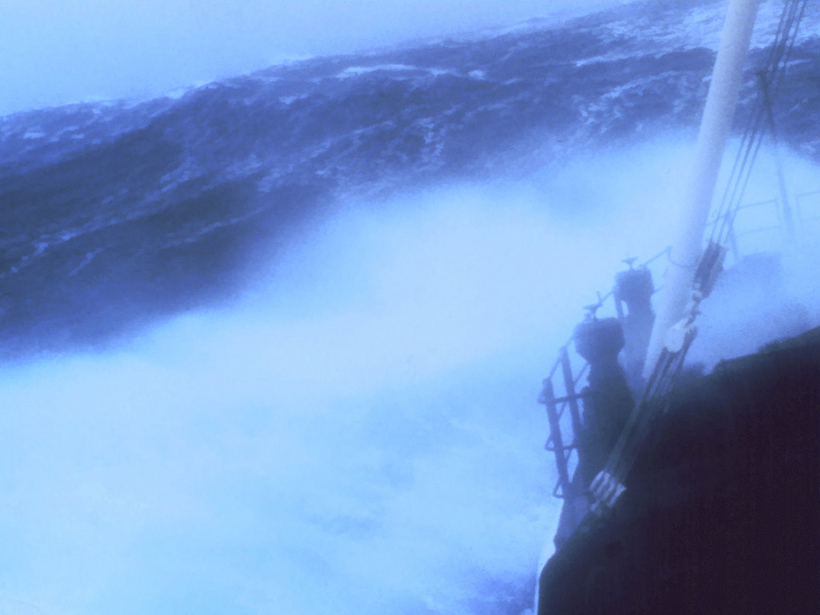On New Year’s Day in 1995 a monster wave crashed into the Statoil Draupner platform, which monitors the pressure and gas flows in Norway’s offshore pipelines. Strong winds forced employees inside just 20 minutes before a wall of water more than 23 meters high struck the site. If the rig had not been anchored to the ocean floor with bucket foundations, the wave would likely have swept it away.
A new mathematical model published 21 June in Scientific Reports successfully simulated the true height of the Draupner wave as well as two other rogue waves. Using wind speed estimates based on satellite data collected during the storms, the simulation recreated the heights of waves so strong they could potentially overturn large ships and dismantle oil rigs.
Pileups and Pulses
Although rogue waves are not common, their capacity for destruction has motivated several attempts to predict wave heights with mathematical models.
Although rogue waves are not common, their capacity for destruction has motivated several attempts to predict wave heights with mathematical models. Some past simulations have relied on a linear process called constructive interference in which the heights of smaller waves simply add together to produce the rogue wave’s towering stature. Others have assumed that a wave breaks down into a series of pulses. This phenomenon, known as modulation instability, is drawn from optics, a far different field of science where waves also play a critical role. Neither approach has succeeded in accurately estimating the heights of past monster waves or predicting when and where they might occur, said engineering professor and lead author Francesco Fedele of the Georgia Institute of Technology in Atlanta, who specializes in fluid and wave mechanics.
In search of a better simulation, Fedele and his colleagues have now represented storm conditions using both the linear combination of waves coming from many directions and nonlinear dynamics that cause irregular wave peaks and trough profiles. Just accounting for asymmetry can increase the crest height by 20%, said Fedele. The team also used wind speed input and wave dissipation to model the direction, frequency, and energy distribution of ocean waves.
Northern European Sea Monsters
The new model accurately predicted wave heights for three of the most common rogue wave case studies.
The new model accurately predicted wave heights for three of the most common rogue wave case studies, Fedele and his team reported. The model incorporated wind speed estimates from the 23-meter Andrea wave, which struck the Conoco Ekofisk platform off the coast of Norway in 2007; an almost 23-meter tall wave observed in 2014 off Killard Point in County Clare, Ireland; and the Draupner event.
Past linear simulations failed because they did not account for irregular wave peaks and other unpredictable factors, according to Fedele. Models based on modulation instability also ran aground because the underlying concept applies to circumstances in which a wave travels along a narrow, one-way corridor, as light waves do in an optical fiber. “This is not important in the ocean because there are no boundaries,” he said.
“The study is mainly about debunking modulational instability as the cause of rogues, in favor of constructive interference,” commented Mark Donelan, professor emeritus of ocean science at Miami University in Florida, who was not involved in the study. “This is important because it will help guide future rogue wave research.”
—Amy Coombs, Editorial Intern
Correction, 1 July 2016: In an earlier version of this article, the heights of the rogue waves simulated by the new model and the field of expertise of the paper’s lead author were incorrect. This article has been updated with the correct information.
Citation:
Coombs, A. (2016), Model predicts heights of rogue waves, Eos, 97, https://doi.org/10.1029/2016EO055211. Published on 29 June 2016.
Text © 2016. The authors. CC BY-NC-ND 3.0
Except where otherwise noted, images are subject to copyright. Any reuse without express permission from the copyright owner is prohibited.

